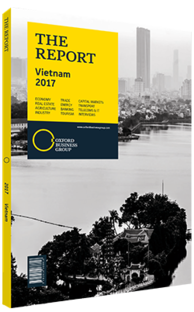Wong Heang Fine, Group CEO, Surbana Jurong: Interview

Interview: Wong Heang Fine
What impact do you expect the ASEAN Free Trade Area (FTA) scheme to have on infrastructure development priorities for the region?
WONG HEANG FINE: ASEAN countries have similar cultural traits and consumer behaviours, so it is easier for ASEAN companies to export their expertise within the region. Reduced tariffs and preferential tax treatment further facilitate this connection. The FTA’s impact will be crucial; however, it won’t be the main catalyst – economic development and government policy will still be the main driver.
If the FTA is in place but a member’s economic condition does not improve, there will be no need for infrastructure projects. What drives economic development is a government’s policies towards foreign investment and the movement of talent. Local populations in many ASEAN host countries lack the technical training and talents that will allow for the country to push forward infrastructure works or economic reforms. I think a lot depends on the economic outlook of the country.
In order to take full advantage of the FTA, ASEAN governments need to engage and with the people demonstrate how a proposed project will benefit them, such as a rise in incomes at the lower level, greater availability of affordable housing and a flow of jobs to the local community. This means more than just the government offering more tax incentives for companies to make more money rather, policies that demonstrate that people in the villages will have a better life as an outcome.
So for us as master planners and engineers, we should really be focused on that issue. If the people are used to getting water from the well, and you can include a water facility project that removes the need to pump the water and still have affordable rates, well then these are the sort of things I am talking about. Government policies need to truly encourage things like this as much as possible.
How can policymakers work to ensure the population base is spread across the city in a productive and integrated manner?
WONG: Cities cannot be cost competitive if there is no balance. In other words, first there needs to be jobs, and then you have to build the housing to support these jobs. You don’t build them 20 km down the road and expect people to travel.
The modern city needs an integrated concept to accommodate the needs of industry, the needs of workers and commercial enterprises, often in the same building. That’s why when you look at Singapore, we have this mixed-use arrangement and it’s very popular. In fact, the sales of residential apartments have been very well received, and commercial and retail shops are more willing to relocate there. Policymakers need to keep integration at the forefront of planning.
If you look across various industries, they are quite different. Knowledge industries like pharmaceuticals, technology and so on will drive demand for certain types of workers and therefore bring forth amenities servicing these professional types. In the financial sector, employees work long hours and this includes lawyers and systems analysts. Cities of the future are gravitating towards this model.
For example, we built a financial centre where many of the finance companies move to, and then high-end bars get built for these workers because it is very popular for their lifestyle. You wouldn’t have this arrangement with manufacturing workers. I think governments need to realise that you need to create jobs, and then residential and commercial activity will follow. Therefore, I think policymakers in the region need to have a master plan in this regard, because collective mixed-use buildings are more cost competitive. If you don’t have this mixed-use ecosystem, then it is hard to attract investments and to attract finance companies to move in.
You have reached the limit of premium articles you can view for free.
Choose from the options below to purchase print or digital editions of our Reports. You can also purchase a website subscription giving you unlimited access to all of our Reports online for 12 months.
If you have already purchased this Report or have a website subscription, please login to continue.

